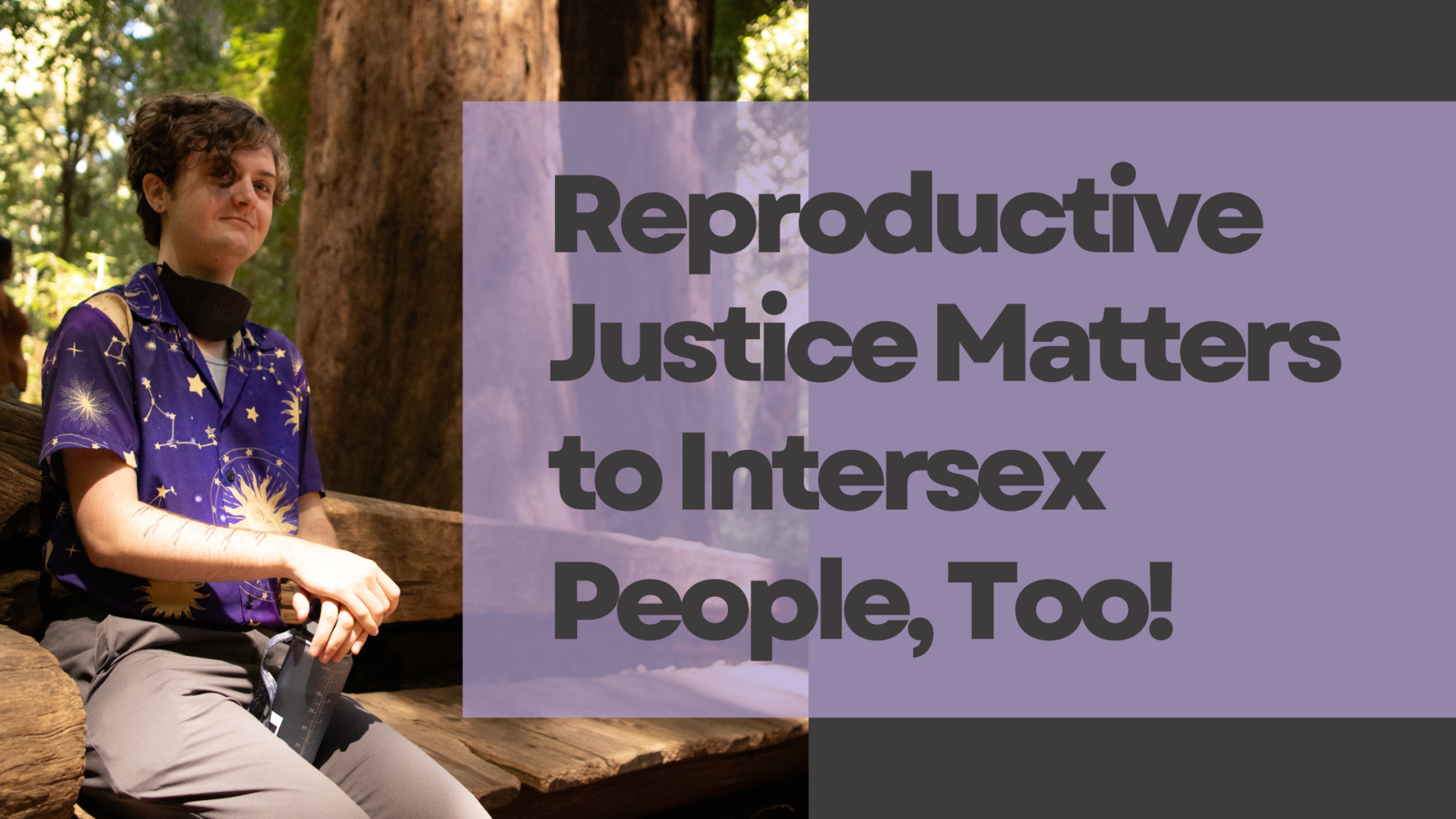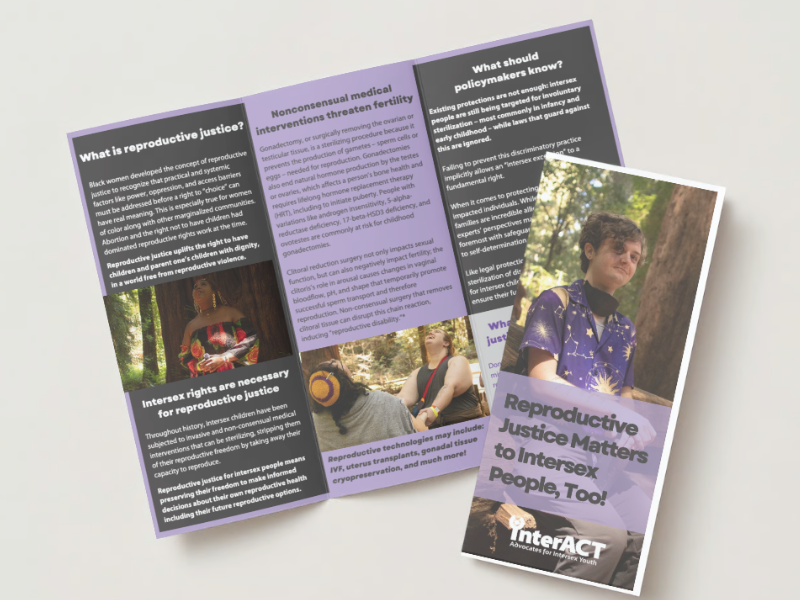Intersex rights are necessary for reproductive justice
Throughout history, intersex children have been subjected to invasive and non-consensual medical interventions that can be sterilizing, stripping them of their reproductive freedom by taking away their capacity to reproduce.
Reproductive justice for intersex people means preserving their freedom to make informed decisions about their own reproductive health including their future reproductive options.
Nonconsensual medical interventions threaten fertility
Gonadectomy, or surgically removing the ovarian or testicular tissue, is a sterilizing procedure because it prevents the production of gametes – sperm cells or eggs – needed for reproduction. Gonadectomies also end natural hormone production by the testes or ovaries, which affects a person’s bone health and requires lifelong hormone replacement therapy (HRT), including to initiate puberty. People with variations like androgen insensitivity, 5-alpha-reductase deficiency, 17-beta-HSD3 deficiency, and ovotestes are commonly at risk for childhood gonadectomies.
Clitoral reduction surgery not only impacts sexual function, but can also negatively impact fertility; the clitoris’s role in arousal causes changes in vaginal bloodflow, pH, and shape that temporarily promote successful sperm transport and therefore reproduction. Non-consensual surgery that removes clitoral tissue can disrupt this chain reaction, inducing “reproductive disability.”*


Reproductive Justice is intersectional
Medical abuse against intersex people is part of a long and continuing history of efforts to control the bodies, lives, and families of marginalized populations. This includes forced sterilization on the basis of race, disability, poverty, and incarceration, and efforts to ban, criminalize, or limit access to abortion, contraception, assisted reproduction, and other reproductive health choices. All of these harmful practices or policies affect some intersex people.
Policies that define womanhood by reproductive capacity continue the practice of picking and choosing what traits make someone “allowed” to be considered a woman, a practice historically weaponized against women of color.
What should policymakers know?
Existing protections are not enough: intersex people are still being targeted for involuntary sterilization – most commonly in infancy and early childhood – while laws that guard against this are ignored.
Failing to prevent this discriminatory practice implicitly allows an “intersex exception” to a fundamental right.
When it comes to protecting intersex rights, listen to impacted individuals. While supportive doctors and families are incredible allies, parents’ and medical experts’ perspectives may not always align first and foremost with safeguarding an intersex infant’s right to self-determination and reproductive freedom.
Like legal protections against the involuntary sterilization of disabled individuals, legal protections for intersex children in this context are crucial to ensure their fundamental rights are upheld.
What should reproductive justice organizations know?
Don’t exclude intersex people because of misconceptions. Myths that intersex people cannot reproduce biologically, or would not choose to if reproductive technologies were made available, are harmful when they lead advocates to neglect intersex people’s rights and access needs.
Learn more about reproductive justice:
*Roy J. Levin, The Clitoris – An Appraisal of its Reproductive Function (2019).
interACT works to empower intersex youth and advance the rights of all people with innate variations in their physical sex characteristics through advocacy, public engagement and community connection. To support our mission, click here.




